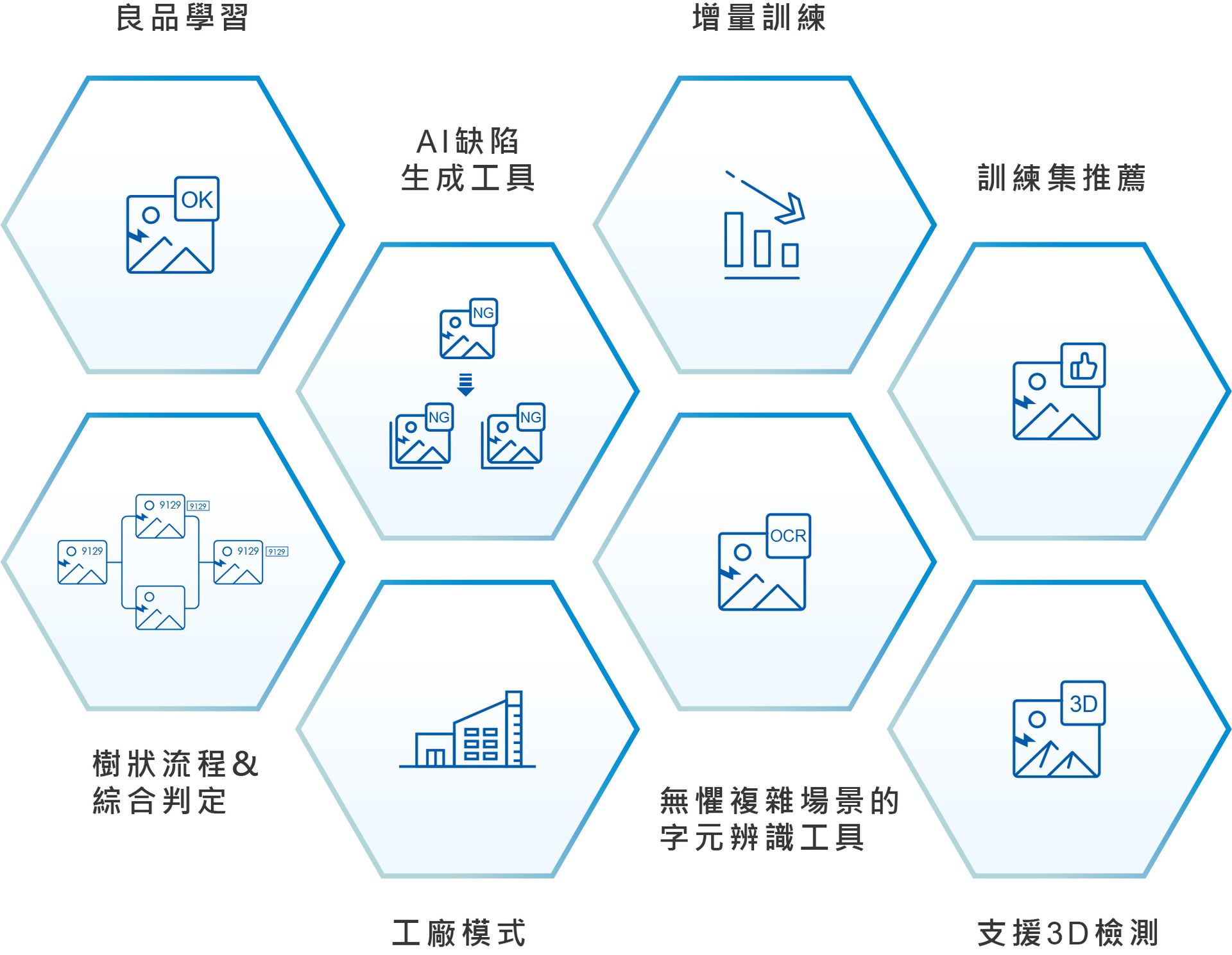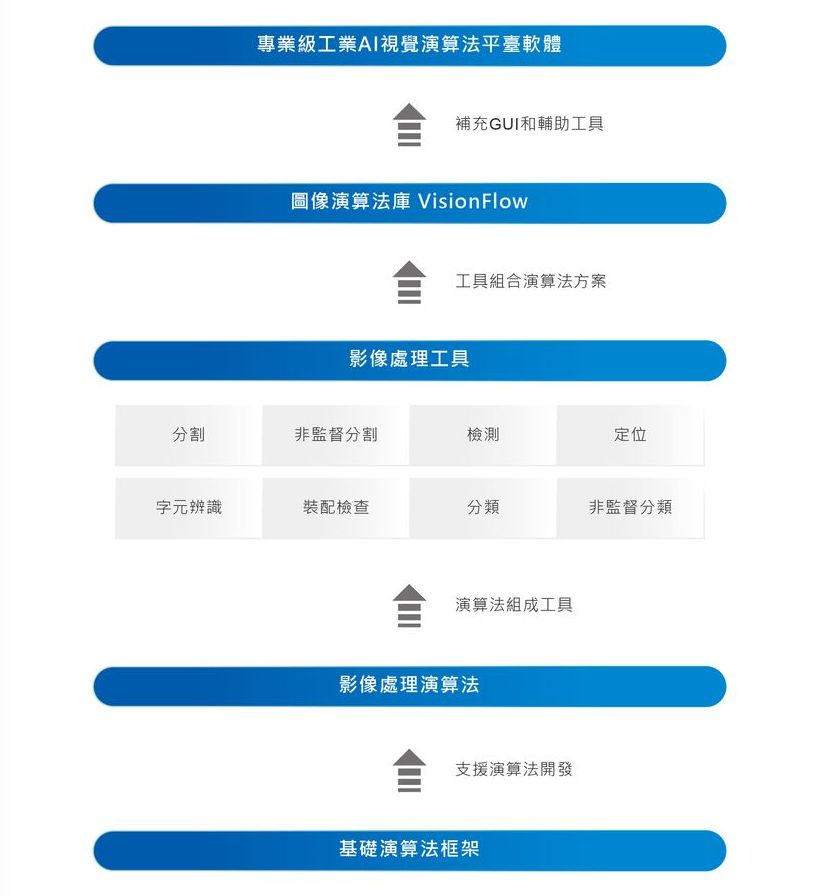Visual software
AI visual inspection software
▶ Product advantages
Powerful performance and wide coverage
- Solve various complex detection problems:
Effectively deal with low contrast, many types of defects, complex background, small defect size, etc.
Complex detection scenarios.
The minimum detectable size is 3 pixels, and can be as low as 2 pixels when the defect contrast is obvious.
- Adapt to high production line speed requirements:
Training 100 images takes about 10 minutes, and pixel-level defect detection for a single image is possible.
Within 30ms, defect classification takes less than 1ms.
- Support small sample scenarios:
Built-in small sample algorithm, supports good product learning mode, accurately identifies single type of defects
30-50 images are required, and even no defect samples are required.
Rich functions and high online efficiency
Helps to efficiently build high-quality models, improve online efficiency, and achieve comprehensive speed-up
65%-90%。
- Incremental training: Only newly added defect images need to be learned, shortening the model retraining time.
- Training set recommendation: Supports intelligent selection of effective data to improve model building effect and efficiency.
- Factory mode: By analogy with the actual production line model detection effect and time, the causes of over-detection and missed detection can be quickly located to improve model verification efficiency.
Flexible secondary development and low overall cost
- Provides a standardized interface, compatible with mainstream operating systems and common industrial vision software.
- Supports multiple programming languages, allowing for flexible secondary development for special scenarios.
- A single image can detect multiple defect types and make comprehensive judgments without the need for secondary development, reducing time and labor costs.
Split
Perform pixel-level inspection on images to accurately identify the location, size, and type of defects.
Application scenarios: Detection of small defects on product surfaces and defects in complex scenarios
Unsupervised segmentation
Only good product images are needed to perform pixel-level inspection for all known and unknown defects, allowing for rapid online verification.
Application scenario: high production line yield, long sample collection cycle and unknown defects
Detection
Perform area-level inspection on images to accurately identify targets or defects.
Application scenarios: multi-target detection, multi-class defect detection
position
Detect the category, location, size, and orientation of single or multiple objects in an image.
Application scenario: high-precision target positioning
Character Recognition
Efficiently recognize text in images.
Application scenarios: overlapping/distorted/skewed character recognition, complex background character recognition, multiple font and text type recognition
Assembly inspection
Detect the presence or absence of targets in a fixed area and whether the quantity meets the requirements.
Application scenario: Quickly verify whether the assembly meets the set standards
Classification
Determine the category of the entire image.
Application scenarios: defect classification, product selection and grading
Unsupervised classification
Only good product images are needed to fully classify all known and unknown defects and quickly conduct online verification.
Application scenario: Anomaly category detection on the production line





